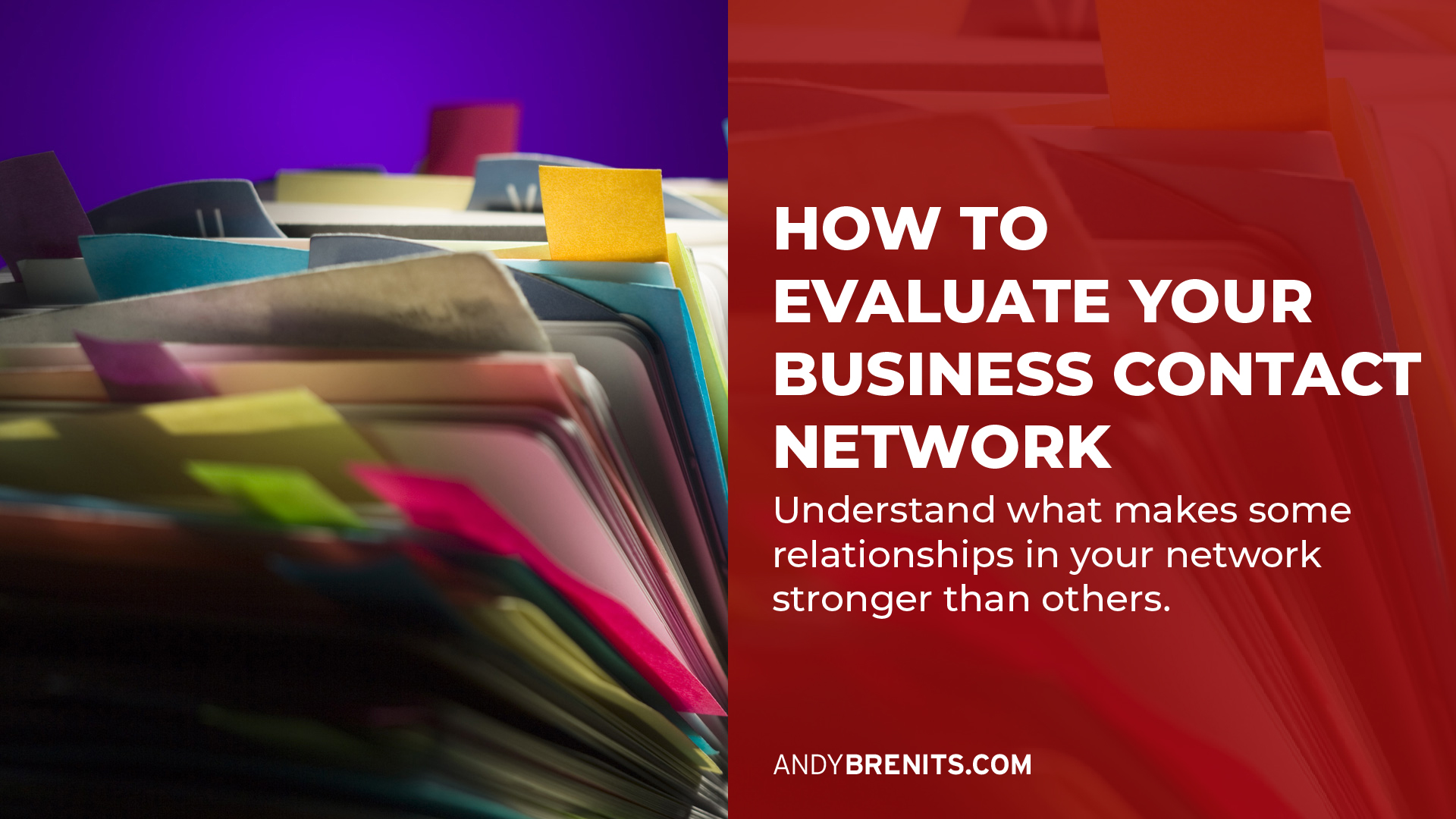“In today’s complex society of comparably skilled, interdependent people, it is more true than ever that success is less a function of what you know than who you know and who knows you.”
Dr. Ronald S. Burt, Department of Sociology, University of Chicago
One of the most valuable and often ignored assets any business professional has is their network of personal contacts. If you keep an organized list of contacts, you’ll be able to effectively and efficiently build and deepen your relationships, ask for referrals, or simply keep in touch.
Understanding your business (and personal) network, what makes some relationships stronger than others, and how to evaluate a robust community of influential contacts is critical to efficiently achieve your goals.
You can create your own contact list using your email system, such as Gmail (personal or business), Outlook, contacts app (on Mac, PC, or Smartphone), or at the very least keep one in a spreadsheet. You could even use a CRM (Customer Relationship Management) app if you plan to do regular outreach and want to maintain a log of how and when you had contact with them.
When you create your contact list, be sure to categorize each contact with their industry or practice area. E.g., Finance, designate what kind of contact they are, such as Referral or Client; and what they should receive from you like a holiday card so you can easily pull your list when the time comes.
A professional social network is a group of individuals who are in contact with one another and serve each other as an unpaid labor source furthering their mutual business interests.
There are three kinds of contacts in such a network:
- Everyone you know
- Everyone you have ever known, and
- Everyone who knows you (but you don’t know them)
The first group is where we focus most of our attention. They are the easily-met people and the people to whom you feel closest, including family, colleagues, neighbors, and friends.
The second group is the one most professionals tend to ignore. “Everyone you have ever known” includes the contacts that you have allowed to fade over time. This includes people you once knew well but no longer see often, if ever, or feel close to. This group – former neighbors, past customers or clients, someone you “did a deal with last year,” classmates, a person who served on a committee or board with you – is a group worth focusing on.
Research shows that professionals often get essential information, access to scarce and critical resources, some of their best leads, and referrals from this second group. That’s because these people are most likely to know about opportunities unknown to you. It’s fair to say that a considerable measure of success in business lies with those from your past.
The third group of contacts is essential in another way. They are a resource you have, but of which you are unaware. Awareness comes from the unexpected phone call, email, or text message that begins: “I was talking with your friend Joe Jones, and he said you would be perfect for this project I’m working on,” or “Hi, we have not met, but Brenda said that we would be lucky to have you help with our new project.”
One of the goals in assessing your list of contacts and connections is to emphasize this third kind of interaction, commonly called the “power-” or “endorsement-referral,” so that your network does the work of furthering your interests for you.
How do you accomplish these endorsement referrals? By maintaining regular contact with members of your entire network, clearly communicating who you are, and demonstrating to those contacts the specifics of your expertise over time. Do that, and reciprocate when helped by others, and you’ll develop a full pipeline of market information, leads on new connections, and referrals to profitable opportunities.



